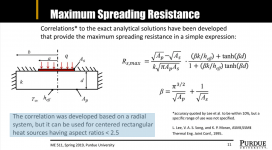Huh, it's note easy to explain the pictures by words
I saw Your photo, but this is absolutely different. If You put Your MOSFETs, as I explain, there should be longer distances between them.
I will scan the pictures, and I will show it.
Why they recommend that type of location? That configuration gives the most equal temperature along the heatsink
Sajti

I saw Your photo, but this is absolutely different. If You put Your MOSFETs, as I explain, there should be longer distances between them.
I will scan the pictures, and I will show it.
Why they recommend that type of location? That configuration gives the most equal temperature along the heatsink

Sajti
The placement of the transistors is probably due to simpler manufacturing in car amplifiers.If you examine quality car audio amplifiers, their
transistor placement is not in the center, if any
thing, it's located on the the edge of the pcb,
but quality car amplifiers are pretty robust and
take major abuse, plus ambient temperatures
due to climate pre-heat the fins, in any case,
these abnormal placement of transistors don't
seem to bother these amplifiers, even kilowatt
ones
I always have to laugh about the heatsinks in car amplifiers anyway. 600W output and just a piece of metal around.
A buddy from mine used to service car amps the whole day.
The wooden tables they were doing the test procedures on were dark brown in those areas the amps were lying on.
I think they were far beyond from 25degress above ambient
If you´d need the whole power from them permanently the manufactures wouldn´t sell one fxxxing amp due to burned out cars.

Jens
I always have to laugh about the heatsinks in car amplifiers anyway. 600W output and just a piece of metal around.
Yeah, that seem to be the trend,
make a cute chassis with no fins.
Sounds like someone is trying
to save money... hehe
There are good amplifiers on the
market or even older designs that
have some heavy heatsinks with
fins that work great. All the
class D car amplifiers require
less heatsinking too.
Yeah, that seem to be the trend,
make a cute chassis with no fins.
Sounds like someone is trying
to save money... hehe
There are good amplifiers on the
market or even older designs that
have some heavy heatsinks with
fins that work great. All the
class D car amplifiers require
less heatsinking too.
The pictures I promised
I hope they are no too much. The last one contains some information about the heatsink installation
Sajti
I hope they are no too much. The last one contains some information about the heatsink installation
An externally hosted image should be here but it was not working when we last tested it.
An externally hosted image should be here but it was not working when we last tested it.
An externally hosted image should be here but it was not working when we last tested it.
Sajti
interesting read, especially pages 17 and 18 about the effect of heat transfer stagnation zone:
https://www.google.com/url?sa=t&rct...deposite.pdf&usg=AOvVaw2onXh5_x_JXVifMdgyxDcw
it seems, like cutting the upper corner OUT, helps the speed of air and thus convection.
Convection is crucial. I decided to use relatively high heat sinks and connect two of them with fins inwards and pcb outwards, to create a closed chimney effect. About Cutting out upper corners i found just today, although i have seen this on some PA equipment before and had no idea why would somebody put this additional effort.
All in all, i bet on 1/3 upper position, to balance between conduction and convection.
https://www.google.com/url?sa=t&rct...deposite.pdf&usg=AOvVaw2onXh5_x_JXVifMdgyxDcw
it seems, like cutting the upper corner OUT, helps the speed of air and thus convection.
Convection is crucial. I decided to use relatively high heat sinks and connect two of them with fins inwards and pcb outwards, to create a closed chimney effect. About Cutting out upper corners i found just today, although i have seen this on some PA equipment before and had no idea why would somebody put this additional effort.
All in all, i bet on 1/3 upper position, to balance between conduction and convection.
- Status
- This old topic is closed. If you want to reopen this topic, contact a moderator using the "Report Post" button.
